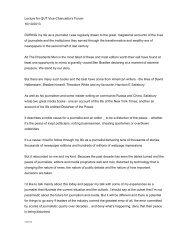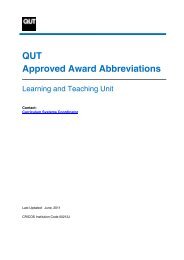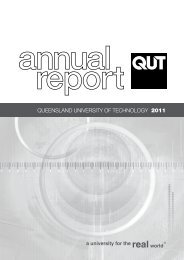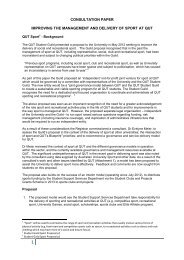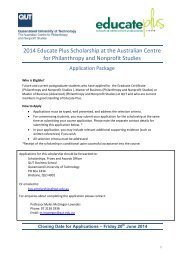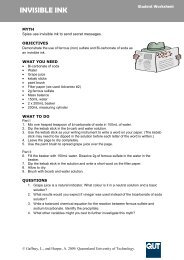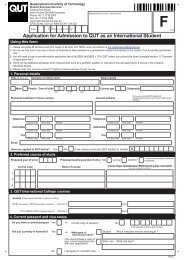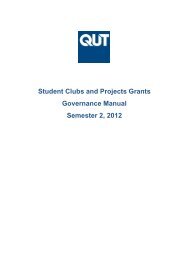EEP201 Fundamentals of Power System Earthing - QUT
EEP201 Fundamentals of Power System Earthing - QUT
EEP201 Fundamentals of Power System Earthing - QUT
Create successful ePaper yourself
Turn your PDF publications into a flip-book with our unique Google optimized e-Paper software.
• Protection <strong>of</strong> large motors, including differential and earth fault protection, thermaloverload considerations, starting & stalling currents and the effect <strong>of</strong> negativephase sequence currents.• Protection <strong>of</strong> large generators, including stator & rotor earth fault protection,biased differential, high impedance differential, negative phase sequence, underfrequency, over excitation, reverse power and out-<strong>of</strong>-step protections.Recommended Prior Study: EEP211Student Comments"Excellent." Integral Energy"A very informative course, it explains a lot <strong>of</strong> what I have been doing." Energex"Very relevant to my day to day job." Snowy Hydro"Tim tams and mints were really good." <strong>Power</strong>link QueenslandEEP213 Statistics• The role <strong>of</strong> statistics in electricity supply engineering.• Strategies for collecting and recording valid data from which statistical inferencescan be made; use <strong>of</strong> operational and inventory data.• Graphical and numerical techniques to summarise data using statistical orspreadsheet packages.• Review <strong>of</strong> probability concepts, random variables, probability distributions.• Specific distributions used in system and component reliability studies.Student Comments"The course was very good because it was very well structured and presented. The bestaspect was that a theoretical subject was presented as a tool to solve practical problemsand problems were relevant, real engineering problems." Energy AustraliaEEP214 Risk Assessment in the Electricity SupplyIndustry• Identification <strong>of</strong> hazards: failure modes and effects analysis, failure modes effectsand criticality analysis - outcomes from possible failure modes.• Hazard and operability studies.• Assessment <strong>of</strong> frequency - fault tree analysis, event tree analysis.• Assessment <strong>of</strong> consequences: consequence analysis, criticality assessment interms <strong>of</strong> chance <strong>of</strong> failure and consequences, incident scenario, damage criteria,damage identification.• Legal and economic consequences.• Case studies including identification <strong>of</strong> hazards, assessment <strong>of</strong> risks, andconsequences in ESI.• Loss <strong>of</strong> load models in generation.



